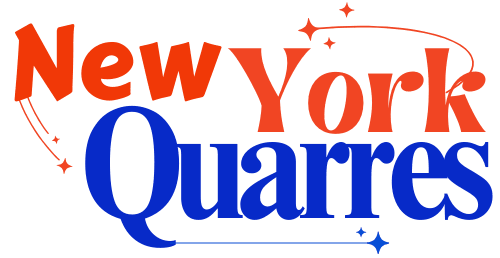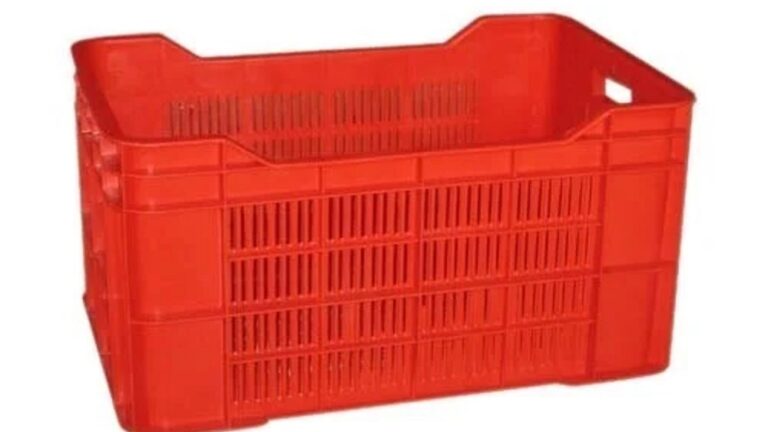Graphic design involves the process making visual material in order to convey concepts. For example, whether creating packaging for a product or a social media posting graphic designers make use of colors, textures forms, typography, and shapes to create designs that captivate the eye and communicate the message.
It is a common misconception it is only about aesthetics. While it is true that aesthetics are important graphic design is many other aspects.
Table of Contents
Graphic design is a fundamental aspect of graphic design.
Graphic design involves a variety of elements that combine to create visual appeal. Some of the most crucial elements of graphic design are:
- Color. The right color can to create a powerful and cohesive design that stirs emotions and clearly communicates the intended message.
- Texture. Texture gives depth and changes the overall appearance and feel of designs.
- Typography. Utilizing text including font size, font and weight as well as the arrangement makes it easier to read and increases the visual appeal of the design.
- Line. Straight, curving thin, thick or lines form the basis in graphic design. Lines define patterns and define spaces to guide the user’s eyes.
- Shape. Lines can create geometric or free-flowing shapes that symbolize objects, generate visual distinctions.
- Space. Space. Negative space (empty spaces) or positive space (areas that are filled with designs) help to create equilibrium and naturally draw the viewer’s attention to the most important aspects.
- Balance. Balance is the term used to describe the way in which visual weight is distributed in a design, thereby creating an impression of stability. It can be achieved by balanced symmetrically (mirroring components) or the asymmetrical balance (variations in color, size or texture).
- Harmony. Harmony establishes a unified visual identity, making sure that every element of the design are unified and have qualities that allow users to comprehend the message you are trying to convey.
What is what’s the distinction between graphic and UX design?
The graphic and UX/UI design have many similarities, as well as a few fundamental principles. Both fields convey ideas visually using elements such as layouts and color that reference design principles such as the hierarchy and contrast, as well as add to the overall look and feel of a brand or product. But graphic style and UX design are distinct from each other in their objectives.
Graphic design is about visually conveying ideas using aesthetics and images. Graphic designers look at typography, color theory, white space and composition to produce designs that successfully grab and hold the viewers’ interest. This applies to static visuals for printed media and logos, as well as editorial design along with marketing and advertising materials.
Let’s imagine a travel booking firm was planning to launch an email campaign promoting discounted destinations. Graphic designers could create the banner in the upper right-hand corner of email with high-quality images of holiday destinations, and typography that highlights the offer and draw the attention of customers.
UX as well as UI design focuses on the overall experience with an interface or product. UX designers think about the complete interaction between users and the product to ensure that it’s enjoyable and functional. They consider the usability of information design accessibility, responsiveness, as well as user-based research, to make sure their designs can adapt to different screens, satisfy the needs of users and can be used by anyone.
In a reference to the Expedia example A UI designer might be focusing on improving the app in order to highlight discounts on destinations. This could mean the creation of a search filter that lets users find cheap trips without having to look through every possible option, or creating an alert feature for push notifications that informs users about special promotions and discounts.
Although graphic design as well as UX design are two distinct fields They can also overlap. Graphic designers may have basic UX/UI abilities, while certain web designers have graphic design expertise. In certain instances, businesses can combine both roles. For large projects the dedicated web design team could collaborate closely with graphic designers in order to keep an identical visual identity throughout the entire project, and ensure an easy transition between design and development.
What kind of skills do graphic designers require?
Graphic designers have many different hats, from generating striking logos to unforgettable color palettes for brands. Here are some of the tasks and skills that are required in graphic design.
- Problem-solving. Graphic designers need to effectively convey ideas and concepts using visuals in order to satisfy customer demands. Through research on their intended market and using their problem-solving abilities designers can develop designs that are resonant and reach the desired result.
- Storytelling. Graphic designers aid in telling stories by making use of icons, color palettes illustrations, visual layouts. Symbolism is an effective method graphic designers employ to tell a story about a brand or to convey information through the use of simple graphics or images.
- Design principles. A thorough knowledge of the fundamentals of graphic design such as balance contrast, balance visual hierarchy, motion or the utilization of white space aids designers in creating user-centered styles that not just visually appealing, but also practical and efficient.
- Communication. Graphic designers should be able to translate complex ideas or sets of data into easily digestible images to make information easier to understand. For instance, they could develop visual guides like flowcharts made of lines, shapes, and typography that guide users through a sequence of steps, making complicated instructions simple to comprehend.
- Theory of color. Graphic designers also need to understand color theory, how colors affect emotions and can create beautiful color combinations. This results in more engaging designs that are able to draw attention of customers and efficiently communicate information.
Five different graphic design types
Graphic design combines several disciplines. Here are a few of the most commonly used kinds in graphic design.
Type 1. Branding, visual identity and branding
The graphic design is focused on creating a consistent visual identity for a brand product or service. The objective is to establish an unifying and consistent visual identity across platforms and media.
A solid visual brand identity is comprised of the following elements:
- Logos
- Font size and typography
- Imagery
- Illustrations and iconography
- Brand color palette
- Brand guidelines
Take Dropbox for instance. Dropbox effectively conveys a sense ease and convenience with its focus on the easy nature of its cloud-based storage product. The open box logo represents its primary function, and the constant usage of blue in the Dropbox colors conveys a trustworthy and trustworthy image.
Graphic designers incorporate the elements they use in their style guideline for brand and design guidelines specific to ensure that all designers know how to incorporate various brand elements.
Type 2: Marketing design
Advertising and marketing design produces visuals that promote a particular the product or services. Design assets convey the message of a campaign and encourage users to take part.
Marketing design includes creating visual assets for:
- Email campaigns.
- Social media campaigns.
- Online ads.
- Website assets.
- Print ads.
- Newsletters.
- Posters.
When a business launches the latest product, an graphic artist is the primary person responsible for creating promotional materials. For instance, they can design attractive banners for websites which combine text and images to highlight the software’s most important attributes. They can also develop several layouts to accommodate different stages of an email campaign such as teasers to create anticipation, announcements about the launch to make users feel excited or offer free trials to entice sign-ups. These emails include elements such as images of the product, attractive illustrations and clearly-defined CTAs that encourage customers to engage in a specific action.
Type 3: Publication design
The design of publications includes the layout and the visual elements in printed publications like magazines, newspapers and books. Graphic designers are keenly focused on the layout, while ensuring harmony, balance and white space in order to readers navigate through the text. They also pick appropriate fonts and dimensions to ensure readability and produce high-quality images to complement the written text.
National Geographic is a classic illustration of a great design for a magazine. It employs stunning photography that captures the essence of its stories, engulfing readers in a variety of experiences. Text and images effortlessly, utilizing captions, sidebars, as well as infographics to enhance the story and give more details to readers.
Type 4: Illustration
Illustration design employs hand-drawn techniques as well as digital tools to translate an idea or story in a visual. Designers think about visual identity in order to produce illustrations that precisely communicate the brand’s style and message. They could illustrate characters or objects for a unique look to social media, websites, resources, or books.
The app for mental health Headspace features illustrations of zany characters across the app, website and other content, in keeping with their focus on sleep, meditation, and well-being for the mind. The illustrations depict a variety of emotions, allowing users to connect with the characters and relate to the content.
Type 5: Packaging design
Packaging for products is an essential element of marketing a product and can influence purchasing choices and distinguishes the product from its rivals. Graphic designers employ imagery, color and typography to improve the overall design and appearance of the packaging. They also use design elements, branding and information structure to present crucial information about the product.
Personal brand of care Dove offers a minimalist packaging design that highlights its focus on beauty and self-care. It utilizes soft colors like blue, white and beige to create feelings of peace and calm and also communicates product names as well as beneficial ingredients using fonts that are simple to read and distinguish visually. It may also use imagery such as floral illustrations in order to strengthen the connection with the natural ingredients they use.
Graphic design Resources
If you’ve worked as a graphic artist for just a few months or years there’s always room to improve. Here are some fantastic tools to continue growing and improving your knowledge in graphic design:
- Thinking with Type The book delve into the world of typography. It also provides an overview of how to use words, letters and texts to create efficient visually-driven communication when designing.
- Graphic Design Rules: 365 essential Dos and Don’ts: This book gives practical guidance for both novice or experienced graphic artists. It covers an array of principles in graphic design and software programs.
- Interaction of Color This book explores color theory and how we perceive color schemes that challenge readers to think about color in a new way.
- Power By Design is a focus on the art of problem-solving in graphic design. It also focuses on designing thinking, and the things to take into consideration to design effective and integrated designs in real-world contexts.
- Freelance Business, Freelance, and Stuff The book offers practical guidance for freelancers looking to start and expand their business.
- True Grit Texture Tutorials: These tutorials provide valuable tips to add textures and effects to create a more realistic design.
- Fonts in Use: Check out this site for font combinations and usage examples to help you design your own.
Begin by creating graphic designs in Figma
By utilizing the most effective patterns, colors, textures forms, and images graphic design can help you create a visual connection with users and leave an impression. Whatever you decide to create, Figma can help.
Here’s how:
- Utilize Figma to standardize graphic design elements that reflect your brand’s aesthetic and ensure consistency across all assets as well as products.
- Before beginning, make your design brief using Figma’s template for free to ensure that your team and you agree on the design guidelines and objectives for the project you are working on.
- Improve your website’s design workflow by using wireframe kits. The drag-and-drop interface makes easy to modify elements for mobile and web mockups to fit your personal style.
- Explore the Figma community for ideas and discover new methods of graphic design that you can apply to your work.




